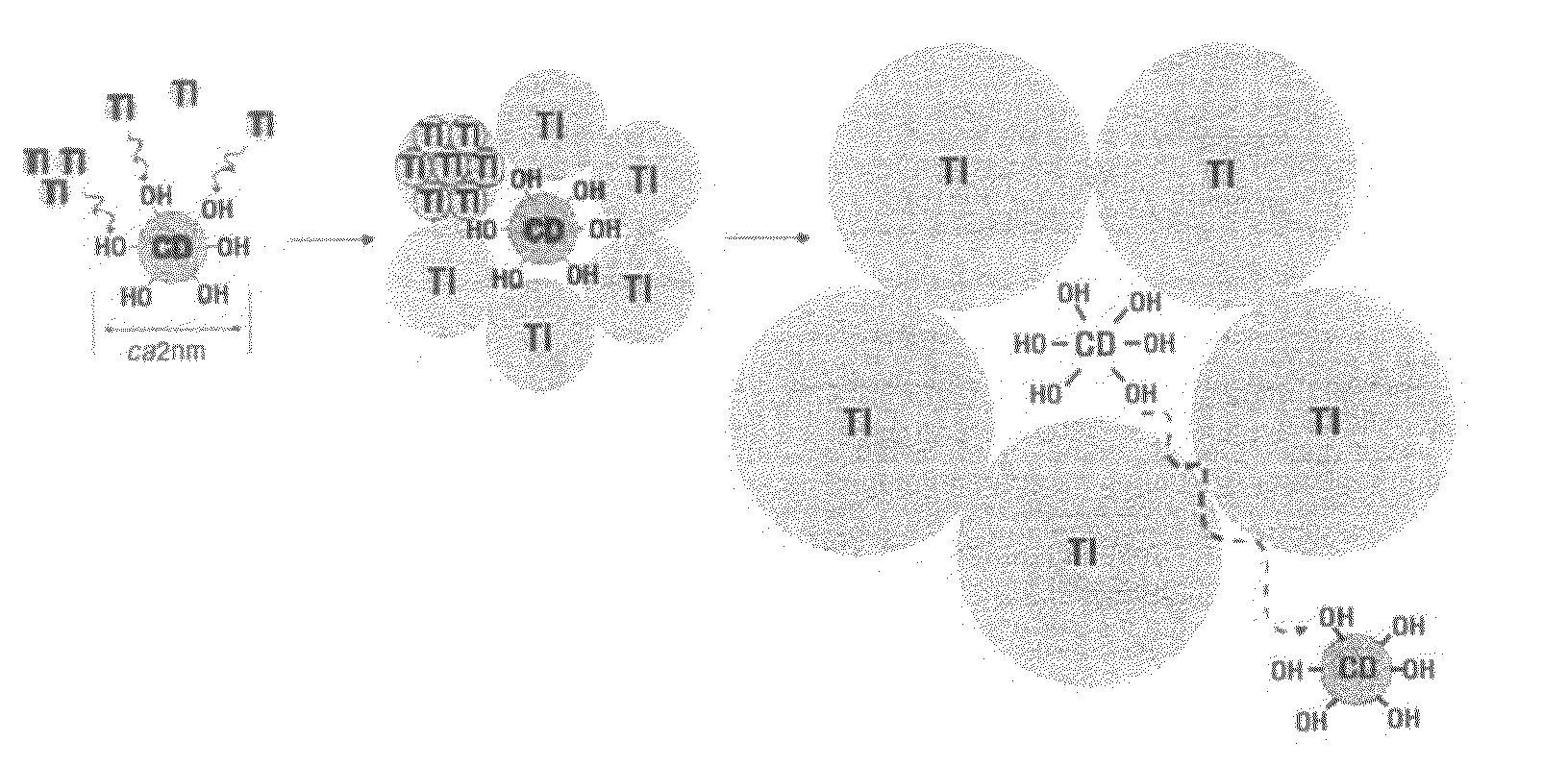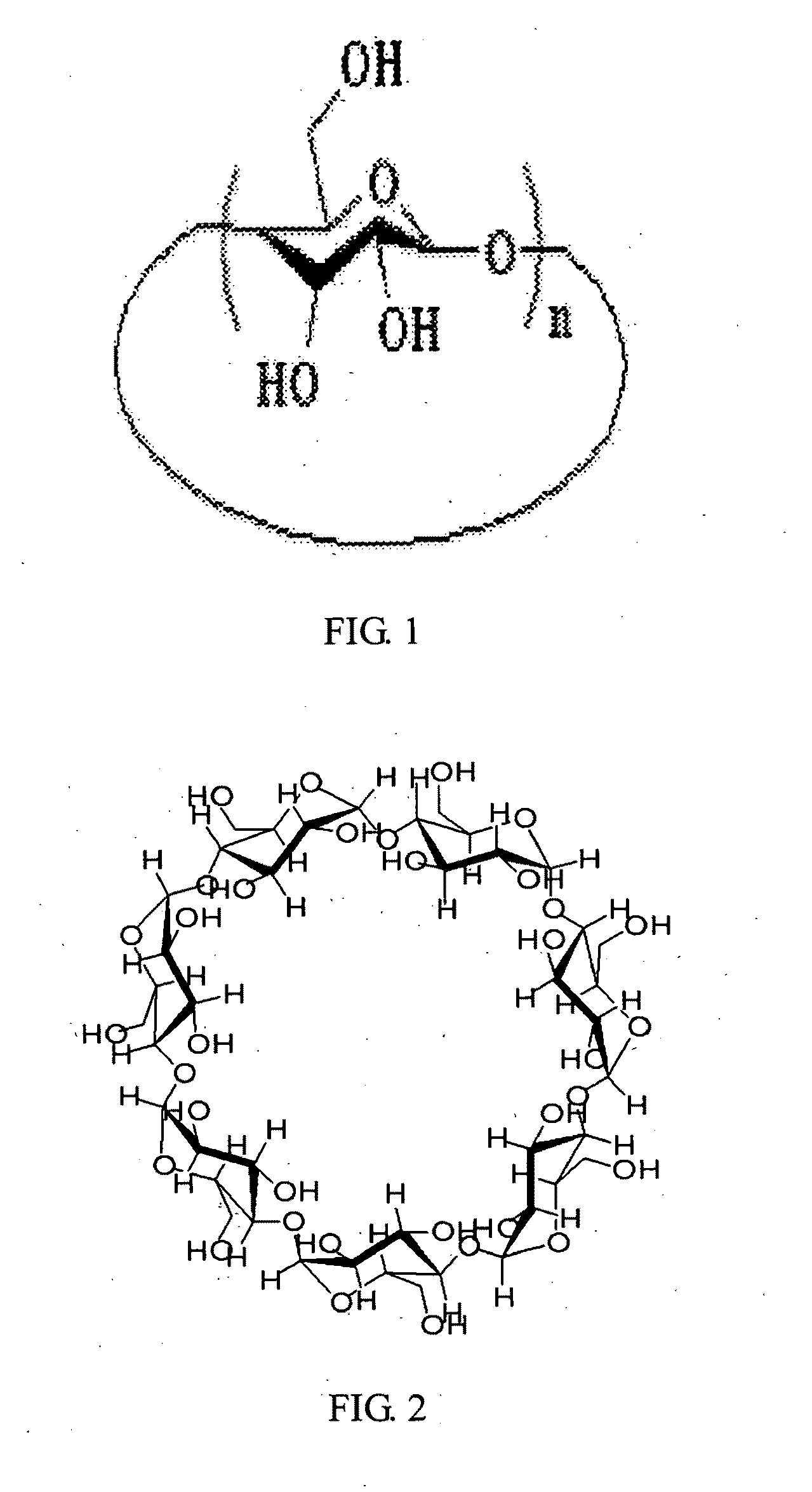Manufacturing method of porous titanium dioxide using cyclodextrin
a technology cyclodextrin, which is applied in the field of manufacturing methods of porous titanium dioxide, can solve the problems of titanium dioxide not growing into nanoparticles and other desired structures, phase change, and difficulty in manufacturing porous titanium dioxide with uniform pores
- Summary
- Abstract
- Description
- Claims
- Application Information
AI Technical Summary
Benefits of technology
Problems solved by technology
Method used
Image
Examples
embodiment 1
Synthesis of Porous Titanium Dioxide Using Beta-Cyclodextrin as a Template
[0041]3 g of beta-cyclodextrin dried at 80° C. for at least one day was dissolved in 200 ml of a sulfuric acid solution of 1.5 pH contained in a 500 ml glass bottle with a cover, and was agitated at room temperature using an agitator. Subsequently, titaniumisopropoxide measured three times the mole ratio of the beta-cyclodextrin was mixed with acetylacetone as the reaction inhibitor at a ratio of 1:1, and agitated for ten minutes. Next, the yellow titaniumisopropoxide-acetylacetone solution is slowly added to the beta-cyclodextrin solution, and then agitated at room temperature for twenty four hours or more with the glass bottle being closed with the cover. Then, a hydrothermal reaction is performed at 90° C. for three hours. The product was obtained using a centrifuge, and washed with 400 ml of distilled water twice and 400 ml, of acetone once. A resultant product was placed into a vacuum oven and dried at ro...
embodiment 2
Synthesis of Porous Titanium Dioxide Using Methyl Beta-Cyclodextrin (DS=About 1.8 to 2) as the Template, in which Twelve to Eighteen Hydroxyl Functional Groups Among Twenty One Hydroxyl Functional Groups of Beta-Cyclodextrin are Substituted by Methyl Functional Groups
[0042]The porous titanium dioxide of this embodiment is synthesized in the same method as the embodiment 1, except that instead of the beta-cyclodextrin, methyl beta-cyclodextrin is used as a template, in which twelve to eighteen hydroxyl functional groups among twenty one hydroxyl functional groups of beta-cyclodextrin are substituted by methyl functional groups.
embodiment 3
Synthesis of Porous Titanium Dioxide Using Alpha-Cyclodextrin as a Template
[0043]The porous titanium dioxide of this embodiment is synthesized in the same method as the embodiment 1, except that instead of the beta-cyclodextrin, alpha-cyclodextrin is used as a template.
PUM
 Login to View More
Login to View More Abstract
Description
Claims
Application Information
 Login to View More
Login to View More - R&D
- Intellectual Property
- Life Sciences
- Materials
- Tech Scout
- Unparalleled Data Quality
- Higher Quality Content
- 60% Fewer Hallucinations
Browse by: Latest US Patents, China's latest patents, Technical Efficacy Thesaurus, Application Domain, Technology Topic, Popular Technical Reports.
© 2025 PatSnap. All rights reserved.Legal|Privacy policy|Modern Slavery Act Transparency Statement|Sitemap|About US| Contact US: help@patsnap.com



